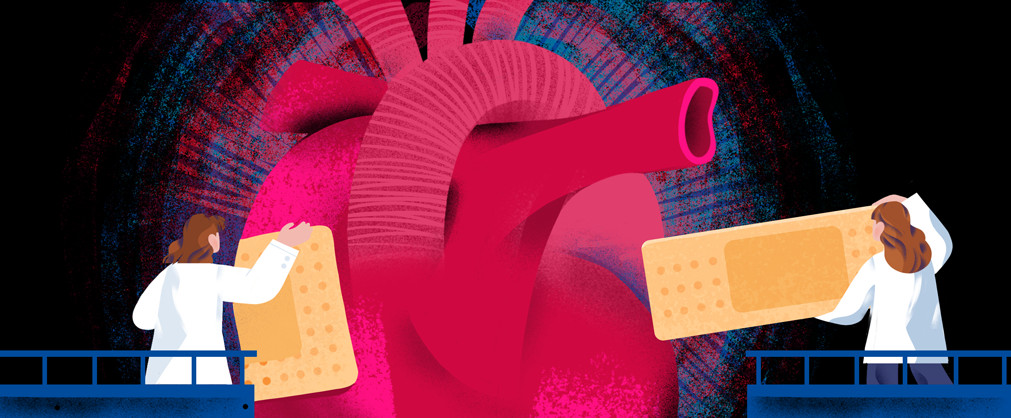The California-based Molecular Devices brings automated 3D cell culture and image analysis together with HeartBeat.bio’s cardioid technology to enable unique and scalable drug discovery and cardiac safety testing.
Cardiovascular diseases are the leading cause of death worldwide, claiming an estimated 17.9 million lives each year. Despite this, the cardiovascular therapeutics market has lagged behind the oncology field, with venture capital firms opting to invest instead in cancer, immunology and neurology startups.
There are several reasons for this lack of investment in cardiology assets, one of which is the slow and uncertain drug discovery and development process. Drug development programs for cardiovascular diseases are complex and clinical trials are costly, requiring thousands of enrolled patients before a drug is cleared.
The lack of success in bringing new cardiovascular drugs to market is also a factor, which is unsurprising, as cardiotoxicity is why 90 percent of all drugs fail clinical trials.
These data hint at the less-than-effective drug discovery and screening processes that typically rely on animal models before a therapeutic is tested in humans. In fact, studies have indicated that animal models are poor predictors of drug safety in humans as they cannot model human physiology accurately.
In recent years, the need for accurate and predictive models has seen the growing popularity of organoids: mini-organs grown in the lab from stem cells. These self-organized, 3D tissue cultures are changing the landscape of how diseases are modeled, studied and treated.
The life science technology provider Molecular Devices recently partnered with HeartBeat.bio to automate and scale the production of cardioids — 3D cell models of the heart that can more accurately recapitulate human biology. Together, the partners have developed the first integrated, end-to-end, high-throughput human cardiac organoid production and screening platform in the world.
We spoke with Susan Murphy, president of Molecular Devices, to find out how cardioids can improve research accuracy and lead to greater returns on drug discovery investment, and how the company plans to take their customers from 2D to 3D models in this next generation of drug discovery.
Can you tell us about the conventional method of drug discovery and the benefits organoid models can offer?

Conventional drug discovery approaches use animal models and cell-based screening assays to select new drug candidates. You first start with a large number of drug candidates that are narrowed down to the best candidate before going into clinical trials. This can take more than a decade, cost billions of dollars, and typically only one in 10 candidates will actually get through to a patient. That’s a lot of failure, and a lot of time and dollars wasted trying to find therapeutics.
These days, drug discovery is shifting towards more translatable and physiologically relevant models, such as organoids. For instance, HeartBeat.bio’s Cardioid platform uses induced pluripotent stem cells (iPSCs) to create multicellular 3D cardiac tissue that mimics the physiology of a human heart. These cardiac cells self-organize and create chambers similar to a heart, mimicking the human condition in vivo.
Organoids are 3D models that are more complex than 2D cell cultures. This comes with a challenge of scaling up. How can Molecular Device’s technology address these challenges?
Molecular Devices has an Organoid Innovation Center that helps clients automate the growing and packaging of organoids at a higher scale. We have the technology, hardware and software that allows for scaling up while taking the guesswork out of the process. For instance, we help with automation, imaging and liquid handling and we have software and protocols that help make the decisions of when to passage the cells and develop the organoids.
Can you tell us more about the synergy between the technologies developed by Molecular Devices and HeartBeat.bio?
HeartBeat.bio brings the biology of cardiac organoids while Molecular Devices has the automation, hardware and imaging capabilities. We work with the organoids and demonstrate how they can be scaled and grown at larger and reproducible volumes to enable cardiotoxicity screens.
What we’re also doing together is creating culture media and protocols as part of a kit that can be used “off-the-shelf.” That’s really the key to making 3D models for drug discovery more mainstream, by generalizing the assays so that anyone can do it and test their candidates immediately.
What does Molecular Devices hope to accomplish with their partnership with HeartBeat.bio?
We want to help our customers achieve scalable, reproducible organoids so that they can perform drug screens in models that are more physiologically relevant earlier in the drug development process. By using human-relevant model systems, researchers can get the therapies to patients sooner and at a lower cost. This is what the partnership with HeartBeat.bio is focusing on: driving the next-generation of drug discovery to help researchers advance their discoveries.
Organoids and other 3D models are the next paradigm for biology research. What role does Molecular Devices hope to play in this growing demand for 3D technology?
We have queried hundreds of customers to find out what is holding them back from screening on organoids, and the main issue is that they are hard to use. And although getting away from animal models is a big focus for our customers, they’re struggling with scalability and lack of reproducibility, which hinders the use of organoids earlier in the drug discovery pipeline.
This is why Molecular Devices is continuing to develop and invest in its technology to provide automated integrated solutions for organoid screening. With our Organoid Innovation Center, we’re trying to get to 100,000 compound screenings and provide more and more protocols with off-the-shelf organoids that can be used for the next generation of drug discovery.
In terms of the future, large pharma players have already committed to utilizing both Molecular Devices and HeartBeat.bio’s technology. Molecular Devices already has facilities in Austria and in the U.K. and is further expanding in Europe, with plans for a new Organoid Innovation Center in Salzburg where customers can visit the facility to see the automation, development and screening of organoids at scale.





